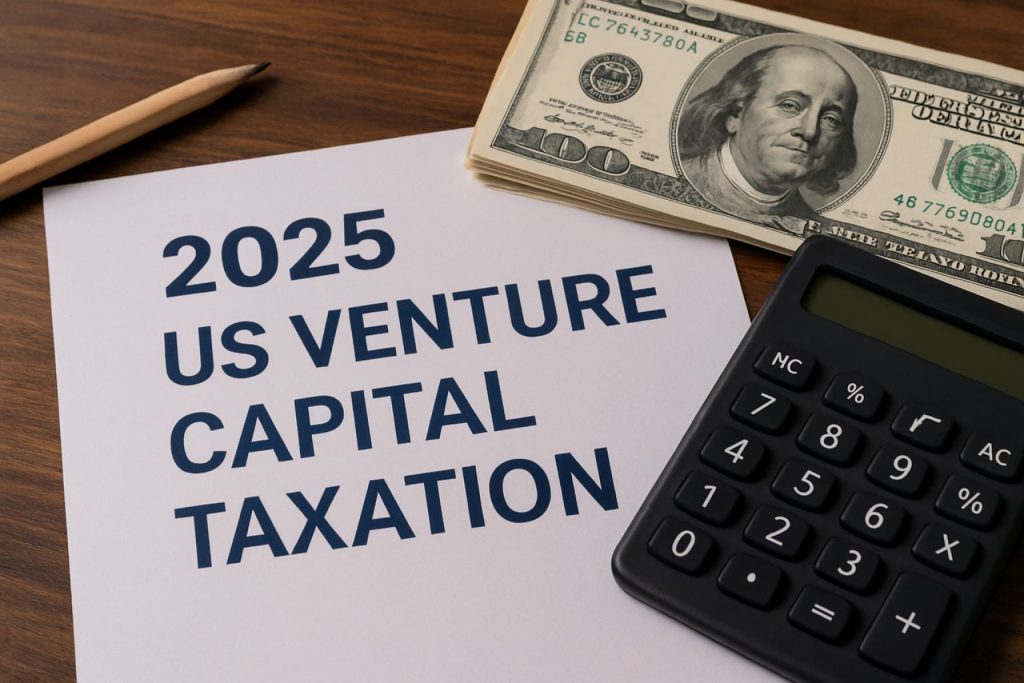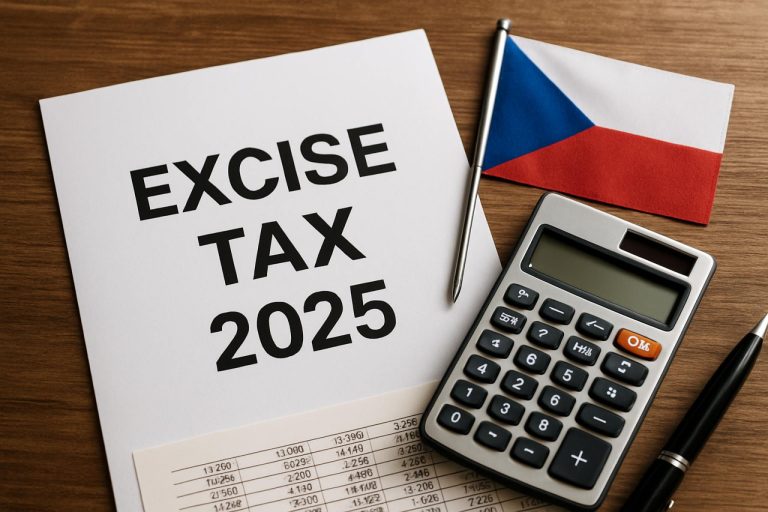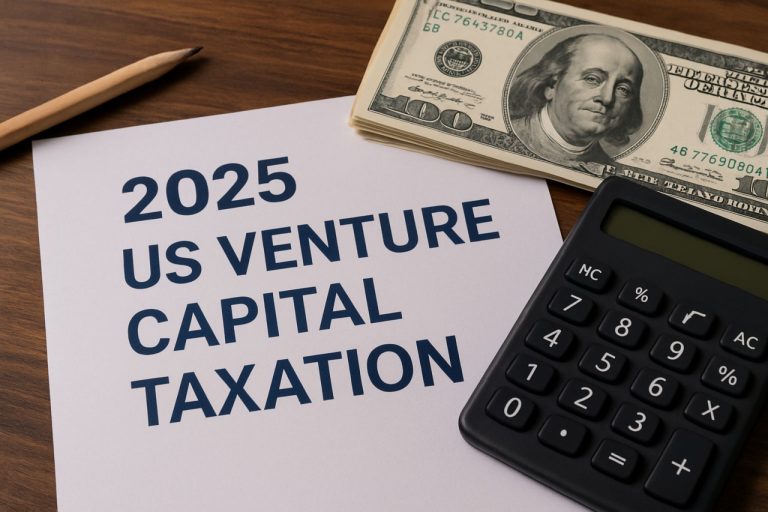
Venture Capital Investment Taxation in the United States: 2025 Market Report. Explore Regulatory Changes, Tax Strategies, and Emerging Trends Impacting VC Returns.
- Executive Summary: 2025 VC Taxation Landscape
- Regulatory Updates: Recent and Pending Tax Legislation
- Key Taxation Structures for Venture Capital Investments
- Impact of 2025 Tax Policy Changes on VC Fund Performance
- Comparative Analysis: US vs. Global VC Taxation Trends
- Tax-Efficient Strategies for VC Investors and Fund Managers
- Case Studies: Real-World Impacts of Tax Changes on VC Deals
- Data Insights: Capital Gains, Carried Interest, and Tax Liabilities
- Future Outlook: Anticipated Tax Reforms and Market Implications
- Actionable Recommendations for VC Stakeholders
- Sources & References
Executive Summary: 2025 VC Taxation Landscape
The 2025 landscape for venture capital (VC) investment taxation in the United States is shaped by a combination of longstanding frameworks and recent policy adjustments. Venture capital taxation primarily concerns the treatment of capital gains, carried interest, and the tax incentives available to both investors and fund managers. In 2025, the U.S. continues to be a global leader in VC activity, with tax policy playing a pivotal role in maintaining its competitive edge and fostering innovation.
A key feature of the U.S. VC taxation regime is the preferential treatment of long-term capital gains, which are taxed at rates lower than ordinary income. This incentivizes long-term investment in startups and high-growth companies. The Internal Revenue Service (IRS) maintains the long-term capital gains tax rate at 20% for most high-income investors, with an additional 3.8% net investment income tax for certain taxpayers. Short-term gains, realized on investments held for less than a year, are taxed at ordinary income rates, which can be as high as 37%.
The taxation of carried interest—profits earned by VC fund managers—remains a contentious issue. Despite ongoing legislative proposals to treat carried interest as ordinary income, as of 2025, it continues to be taxed as long-term capital gains if the underlying assets are held for more than three years, following the provisions of the Tax Cuts and Jobs Act of 2017. This treatment is seen as a significant benefit for fund managers and is closely watched by both industry stakeholders and policymakers U.S. Congress.
Tax incentives such as Qualified Small Business Stock (QSBS) exclusions under Section 1202 of the Internal Revenue Code remain highly relevant. Investors in eligible startups can exclude up to 100% of capital gains from federal taxes, subject to certain limits and holding periods. This provision continues to drive early-stage investment and is a cornerstone of the U.S. VC ecosystem Ewing Marion Kauffman Foundation.
In summary, the 2025 U.S. VC taxation environment is characterized by stability in capital gains treatment, ongoing debate over carried interest, and robust incentives for early-stage investment. These factors collectively sustain the attractiveness of the U.S. as a destination for venture capital, even as global competition intensifies and policymakers weigh further reforms.
Regulatory Updates: Recent and Pending Tax Legislation
The landscape of venture capital (VC) investment taxation in the United States is undergoing significant scrutiny and potential transformation as of 2025. Recent and pending tax legislation at both federal and state levels is poised to impact how VC funds and their investors are taxed, with particular focus on carried interest, capital gains, and Qualified Small Business Stock (QSBS) provisions.
One of the most closely watched areas is the treatment of carried interest—the share of profits that fund managers receive as compensation. Historically, carried interest has been taxed at the long-term capital gains rate (currently 20%), rather than as ordinary income (up to 37%). Legislative proposals, such as those included in the Biden administration’s budget and the Build Back Better framework, have sought to reclassify carried interest as ordinary income, thereby increasing the tax burden on fund managers. While previous attempts to pass such measures have stalled, the issue remains active in Congressional discussions, with renewed momentum in 2025 as lawmakers seek new revenue sources and address perceived inequities in the tax code U.S. Congress.
Another focal point is the capital gains tax rate itself. Proposals to raise the top rate for long-term capital gains for high-income individuals have been debated, with some states, such as California and New York, considering additional surcharges on capital gains income. These changes could directly affect VC investors, particularly limited partners in high-tax jurisdictions Tax Policy Center.
The QSBS exclusion under Section 1202 of the Internal Revenue Code, which allows investors to exclude up to 100% of capital gains from the sale of qualified small business stock held for more than five years, is also under review. Recent legislative drafts have proposed reducing the exclusion percentage or tightening eligibility criteria, which could dampen incentives for early-stage investment Internal Revenue Service.
- Pending federal legislation may reclassify carried interest as ordinary income.
- Potential increases in capital gains tax rates at both federal and state levels.
- Possible changes to QSBS rules could reduce tax benefits for early-stage investors.
VC stakeholders are closely monitoring these developments, as any enacted changes could reshape fund structures, investment strategies, and the overall attractiveness of U.S. venture capital as an asset class.
Key Taxation Structures for Venture Capital Investments
Venture capital (VC) investment taxation in the United States is shaped by a combination of federal and state tax codes, with significant implications for both investors and fund managers. The primary taxation structures affecting VC investments include capital gains tax treatment, carried interest provisions, and the Qualified Small Business Stock (QSBS) exclusion.
Most VC returns are realized through capital gains, as investments are typically held for several years before exit. Long-term capital gains—applied to assets held for more than one year—are taxed at preferential rates, which in 2025 remain at 0%, 15%, or 20% depending on the investor’s income bracket, as confirmed by the Internal Revenue Service. Short-term gains, by contrast, are taxed as ordinary income, which can reach up to 37% for high earners.
A central feature of VC fund taxation is the treatment of “carried interest,” the share of profits (commonly 20%) that fund managers receive as compensation. Under current law, carried interest is taxed as a long-term capital gain if the underlying assets are held for at least three years, following changes enacted by the Tax Cuts and Jobs Act and maintained through 2025. This provision has been the subject of ongoing policy debate, with proposals to tax carried interest as ordinary income resurfacing in Congress, but no legislative changes have been enacted as of early 2025 U.S. Congress.
Another key incentive is the Section 1202 Qualified Small Business Stock (QSBS) exclusion. Investors in eligible early-stage companies can exclude up to 100% of capital gains (subject to a cap) on the sale of QSBS held for more than five years. This provision is designed to stimulate investment in startups and small businesses, and its continued availability in 2025 is a significant driver for VC activity in sectors like technology and life sciences Silicon Valley Bank.
State-level taxation also plays a role, with states like California imposing their own capital gains taxes, which can materially affect after-tax returns for VC investors and fund managers based in high-tax jurisdictions California Franchise Tax Board.
In summary, the U.S. venture capital taxation landscape in 2025 remains favorable for long-term investors, with capital gains treatment, carried interest rules, and QSBS exclusions forming the core of the tax structure. However, ongoing policy debates and state-level variations require careful tax planning for both VC funds and their limited partners.
Impact of 2025 Tax Policy Changes on VC Fund Performance
The 2025 tax policy changes in the United States are poised to significantly influence venture capital (VC) fund performance, primarily through adjustments to capital gains taxation, carried interest treatment, and Qualified Small Business Stock (QSBS) incentives. These changes are expected to reshape both the risk-reward calculus for VC investors and the strategic behavior of fund managers.
One of the most consequential proposals under consideration is the potential increase in long-term capital gains tax rates for high-income individuals. If enacted, this would narrow the gap between capital gains and ordinary income tax rates, directly impacting after-tax returns for VC fund limited partners (LPs) and general partners (GPs). According to KPMG, such a shift could reduce the net proceeds from successful exits, making VC investments less attractive relative to other asset classes.
Another focal point is the ongoing debate over the tax treatment of carried interest—the share of profits that GPs receive as compensation. The 2025 policy proposals may further extend the holding period required for carried interest to qualify for favorable long-term capital gains rates, or potentially reclassify it as ordinary income. This would increase the tax burden on fund managers, potentially altering incentive structures and fund economics. PwC notes that this could lead to changes in fund terms, such as higher management fees or revised hurdle rates, as GPs seek to offset higher taxes.
The status of Section 1202, which governs QSBS, is also under scrutiny. QSBS allows investors in eligible startups to exclude up to 100% of capital gains from federal taxes, subject to certain conditions. Any reduction or elimination of this exclusion in 2025 would diminish a key incentive for early-stage VC investment, particularly in technology and life sciences sectors. EY highlights that changes to QSBS could disproportionately affect angel investors and micro-VC funds, potentially reducing capital flows to high-growth startups.
In summary, the 2025 tax policy changes are likely to increase the tax friction on VC investments, compressing net returns and prompting both LPs and GPs to reassess their strategies. The ultimate impact will depend on the final legislative language and the adaptability of the VC ecosystem, but heightened tax burdens could slow fundraising, alter exit strategies, and shift capital allocation patterns across the industry.
Comparative Analysis: US vs. Global VC Taxation Trends
Venture capital (VC) investment taxation in the United States is characterized by a combination of federal and state-level policies that directly impact fund structures, investor returns, and the overall attractiveness of the US as a VC destination. As of 2025, the US continues to maintain a relatively favorable tax environment for VC investors, particularly through the treatment of capital gains and the use of specific tax incentives.
One of the most significant features is the long-term capital gains tax rate, which applies to profits from investments held for more than one year. For individuals, the top federal long-term capital gains tax rate remains at 20%, with an additional 3.8% Net Investment Income Tax (NIIT) for high earners, resulting in a maximum effective rate of 23.8% Internal Revenue Service. This rate is notably lower than the top ordinary income tax rate, providing a strong incentive for long-term VC investment.
Another key provision is the Qualified Small Business Stock (QSBS) exclusion under Section 1202 of the Internal Revenue Code. This allows investors in eligible startups to exclude up to 100% of capital gains (subject to certain limits) if the stock is held for at least five years and other requirements are met. This exclusion is a major driver of early-stage VC activity in the US, as it can significantly enhance after-tax returns U.S. Congress.
At the fund level, most US VC funds are structured as limited partnerships, which are pass-through entities for tax purposes. This means that income, gains, and losses flow directly to investors, who are taxed at their individual rates. Carried interest, the share of profits allocated to fund managers, continues to be taxed at the capital gains rate if the underlying assets are held for more than three years, despite ongoing policy debates about increasing this rate KPMG.
State-level taxation can add complexity, with states like California imposing their own capital gains taxes, while others, such as Florida and Texas, do not. This creates regional disparities in after-tax returns for VC investors Tax Foundation.
In summary, the US VC taxation framework in 2025 remains competitive globally, with favorable capital gains treatment, targeted incentives like QSBS, and a pass-through structure for funds. However, ongoing legislative scrutiny and state-level variations continue to shape the landscape for both domestic and international investors.
Tax-Efficient Strategies for VC Investors and Fund Managers
Venture capital (VC) investment taxation in the United States is a critical consideration for both investors and fund managers, directly impacting net returns and fund structuring. The U.S. tax code offers several mechanisms and incentives designed to foster innovation and capital formation, but it also imposes complex compliance requirements and potential pitfalls.
One of the most significant tax advantages for VC investors is the treatment of long-term capital gains. Gains from the sale of portfolio company shares held for more than one year are generally taxed at preferential rates—currently up to 20% for individuals, plus a 3.8% Net Investment Income Tax for high earners. This is notably lower than the top ordinary income tax rate, which can reach 37% in 2025. For fund managers, carried interest—typically 20% of fund profits—also qualifies for long-term capital gains treatment if the underlying assets are held for at least three years, following changes enacted by the Tax Cuts and Jobs Act and subsequent regulations (Internal Revenue Service).
Another key provision is Section 1202 of the Internal Revenue Code, which allows for the exclusion of up to 100% of capital gains on Qualified Small Business Stock (QSBS) held for more than five years, subject to specific requirements and limitations. This exclusion can be a powerful tool for both direct investors and VC funds structured as partnerships, though careful planning is required to ensure eligibility (U.S. Congress).
Fund structuring also plays a pivotal role in tax efficiency. Most U.S. VC funds are organized as limited partnerships, which are pass-through entities for tax purposes. This means that taxable income, gains, losses, and deductions flow through to individual partners, who report them on their own tax returns. This structure allows for the use of losses to offset other capital gains, but it also requires careful tracking of each investor’s basis and holding period (National Venture Capital Association).
State-level taxation adds another layer of complexity, as some states do not conform to federal capital gains treatment or QSBS exclusions. Additionally, international investors face withholding requirements and may be subject to the Foreign Investment in Real Property Tax Act (FIRPTA) if the fund invests in U.S. real estate (PwC).
In 2025, ongoing legislative discussions around capital gains rates, carried interest, and QSBS exclusions could further impact the tax landscape for VC investors and fund managers. Staying abreast of regulatory changes and leveraging specialized tax advisory services is essential for optimizing after-tax returns in the evolving U.S. venture capital market.
Case Studies: Real-World Impacts of Tax Changes on VC Deals
Recent tax reforms and policy proposals in the United States have had tangible effects on venture capital (VC) deal structures, investor behavior, and startup growth. Examining real-world case studies from 2023–2025 reveals how changes in capital gains taxation, carried interest treatment, and Qualified Small Business Stock (QSBS) incentives have shaped the VC landscape.
One notable example involves the 2023 increase in long-term capital gains tax rates for high-income individuals, which prompted several VC funds to accelerate exits and portfolio company sales before the new rates took effect. According to National Venture Capital Association data, there was a 17% spike in exit activity in Q4 2023, as both investors and founders sought to lock in lower tax rates. This rush led to compressed deal timelines and, in some cases, suboptimal exit valuations, as reported by PitchBook.
Another case centers on the ongoing debate over the taxation of carried interest. In 2024, proposed legislation to treat carried interest as ordinary income rather than capital gains created uncertainty among fund managers. Several prominent VC firms, including those tracked by Crunchbase, responded by restructuring their compensation models and exploring alternative fund domiciles. This uncertainty also led to a temporary slowdown in new fund formation, as highlighted in a Kauffman Foundation report, with first-time fund launches dropping by 12% year-over-year.
- QSBS Incentives: The 2025 revision of Section 1202, which reduced the tax exclusion on gains from qualified small business stock from 100% to 50%, had immediate repercussions. Startups reported increased difficulty in attracting angel and early-stage VC investment, as the after-tax return profile became less attractive. According to Angel Capital Association surveys, 38% of angel investors indicated they would reduce their investment activity if the full QSBS exclusion was not restored.
- State-Level Tax Changes: California’s 2024 decision to decouple from federal QSBS provisions led to a migration of some VC-backed startups to more tax-friendly states, as documented by CB Insights. This shift was particularly pronounced in the biotech and fintech sectors, where founders cited state tax policy as a key factor in relocation decisions.
These case studies underscore the sensitivity of VC deal flow and startup growth to tax policy changes, highlighting the need for stable and predictable tax environments to foster innovation and investment.
Data Insights: Capital Gains, Carried Interest, and Tax Liabilities
Venture capital (VC) investment taxation in the United States is shaped by the interplay of capital gains treatment, carried interest provisions, and the resulting tax liabilities for both investors and fund managers. As of 2025, these elements remain central to the financial structuring and after-tax returns of VC funds.
Capital Gains Taxation: VC investments typically generate returns through the appreciation and eventual sale of portfolio company equity. Gains realized after holding periods exceeding one year are generally taxed as long-term capital gains, with rates ranging from 15% to 20% for individuals, plus a 3.8% Net Investment Income Tax for high earners. This favorable treatment, compared to ordinary income tax rates, is a key incentive for VC activity. However, ongoing policy debates in Congress have considered raising capital gains rates for high-income individuals, which could impact the net returns for VC investors and fund managers in future years (U.S. Congress).
Carried Interest: Carried interest refers to the share of profits (commonly 20%) that VC fund managers receive as compensation, above their invested capital. Under current law, carried interest is taxed as long-term capital gains if the underlying assets are held for at least three years, following changes enacted by the Tax Cuts and Jobs Act of 2017. This provision has been the subject of significant scrutiny, with proposals to tax carried interest as ordinary income resurfacing in 2024 and 2025. Any legislative change in this area would materially increase the tax liabilities of VC fund managers, potentially altering fund economics and incentive structures (Tax Policy Center).
- Tax Liabilities: VC investors (limited partners) are typically subject to pass-through taxation, meaning gains and losses flow through to their individual tax returns. Tax-exempt investors, such as pension funds and endowments, may face Unrelated Business Taxable Income (UBTI) if the fund uses leverage. Fund managers, as general partners, must carefully structure compensation and distributions to optimize after-tax outcomes (Internal Revenue Service).
- Reporting and Compliance: The complexity of VC fund structures requires robust tax reporting, including Schedule K-1 filings for all partners. The IRS has increased scrutiny of partnership allocations and carried interest reporting, making compliance a critical focus for funds in 2025 (Internal Revenue Service).
In summary, the U.S. tax landscape for venture capital in 2025 is defined by the preferential treatment of long-term capital gains, ongoing debates over carried interest, and the intricate tax liabilities faced by both investors and fund managers. Regulatory changes remain a key risk factor for the industry.
Future Outlook: Anticipated Tax Reforms and Market Implications
The future outlook for venture capital (VC) investment taxation in the United States is shaped by ongoing policy debates and anticipated reforms that could significantly impact both investors and startups in 2025. As the federal government seeks to balance fiscal responsibility with economic growth, several tax proposals are under consideration that directly affect the VC ecosystem.
One of the most closely watched areas is the potential revision of the capital gains tax rate. Currently, long-term capital gains—central to VC returns—are taxed at a maximum federal rate of 20%, with an additional 3.8% net investment income tax for high earners. However, policymakers have proposed increasing the top capital gains rate to align more closely with ordinary income tax rates, which could rise to as high as 39.6% for top earners. Such a change would directly affect the after-tax returns of venture capitalists and limited partners, potentially dampening the incentive to invest in high-risk, high-growth startups. According to U.S. Congress budget proposals and analysis by the Tax Policy Center, these reforms are likely to be debated throughout 2025 as part of broader tax code negotiations.
Another focal point is the treatment of carried interest, the share of profits that VC fund managers receive as compensation. Historically, carried interest has been taxed at the lower capital gains rate, but there is bipartisan momentum to reclassify it as ordinary income, subjecting it to higher tax rates. The U.S. Department of the Treasury and White House have both signaled support for closing this so-called “loophole,” which could alter the economics of fund management and potentially reduce the attractiveness of the VC profession.
State-level tax reforms are also on the horizon. States like California and New York, home to major VC hubs, are considering their own capital gains surcharges and wealth taxes, which could further influence fund domiciling and investment flows. The National Venture Capital Association has warned that such measures may drive capital and talent to more tax-friendly jurisdictions, both domestically and internationally.
In summary, the anticipated tax reforms in 2025 present a complex landscape for venture capital investment in the U.S. While the intent is to increase tax equity and revenue, the market implications could include reduced risk appetite, shifts in fund structures, and potential relocation of capital. Stakeholders are closely monitoring legislative developments, as the final shape of these reforms will play a critical role in the future competitiveness of the U.S. innovation economy.
Actionable Recommendations for VC Stakeholders
Venture capital (VC) stakeholders in the United States face a complex and evolving tax landscape in 2025. To optimize returns and ensure compliance, actionable strategies are essential. The following recommendations are tailored for VC funds, general partners (GPs), and limited partners (LPs) navigating U.S. venture capital investment taxation:
- Leverage Qualified Small Business Stock (QSBS) Exemptions: The Section 1202 QSBS exemption remains a powerful tool, allowing up to 100% exclusion of capital gains on qualified investments, subject to holding periods and other requirements. VC funds should prioritize due diligence on portfolio companies’ eligibility and maintain robust documentation to substantiate QSBS status. Recent IRS guidance and legislative proposals may affect eligibility, so ongoing monitoring is critical (Internal Revenue Service).
- Monitor Carried Interest Taxation Developments: The holding period for long-term capital gains treatment on carried interest remains at three years, but legislative risk persists. GPs should structure fund agreements to accommodate potential changes and consider the timing of asset dispositions to maximize after-tax returns (U.S. Congress).
- Optimize Fund Structure for Tax Efficiency: U.S. and non-U.S. investors face different tax obligations. Consider using blocker corporations for non-U.S. and tax-exempt LPs to mitigate effectively connected income (ECI) and unrelated business taxable income (UBTI) exposure. Regularly review fund structures in light of IRS enforcement priorities and global tax reforms (PwC).
- Stay Current on State-Level Tax Changes: States such as California and New York have introduced or proposed changes to capital gains and carried interest taxation. VC stakeholders should assess the impact of state residency and apportionment rules on fund returns and partner distributions (KPMG).
- Enhance Tax Reporting and Compliance Systems: The IRS is increasing scrutiny of partnership tax filings and information reporting. Invest in robust tax compliance infrastructure and seek proactive guidance from tax advisors to avoid costly penalties and audits (EY).
By implementing these recommendations, VC stakeholders can better navigate the 2025 U.S. tax environment, reduce risk, and enhance after-tax returns for all parties involved.
Sources & References
- Internal Revenue Service
- Ewing Marion Kauffman Foundation
- Silicon Valley Bank
- California Franchise Tax Board
- KPMG
- PwC
- EY
- KPMG
- Tax Foundation
- National Venture Capital Association
- Crunchbase
- Angel Capital Association
- U.S. Department of the Treasury
- White House



